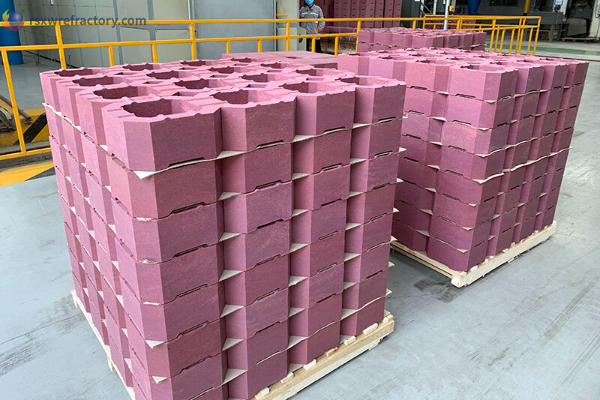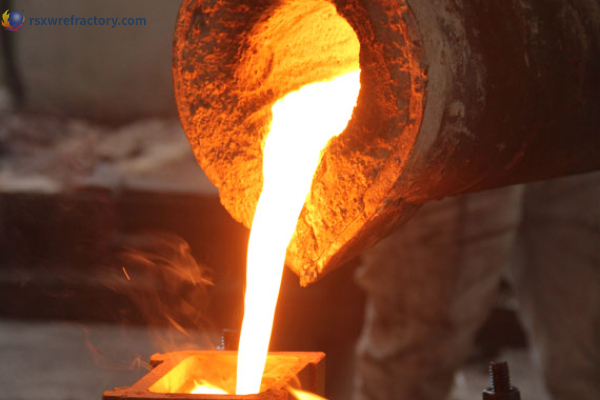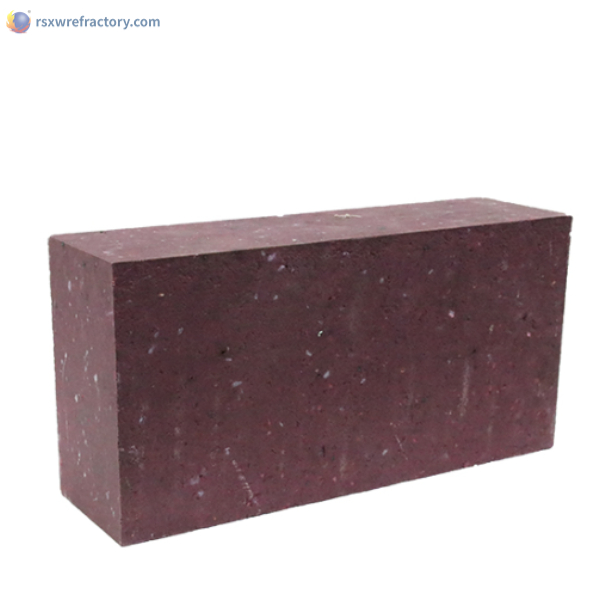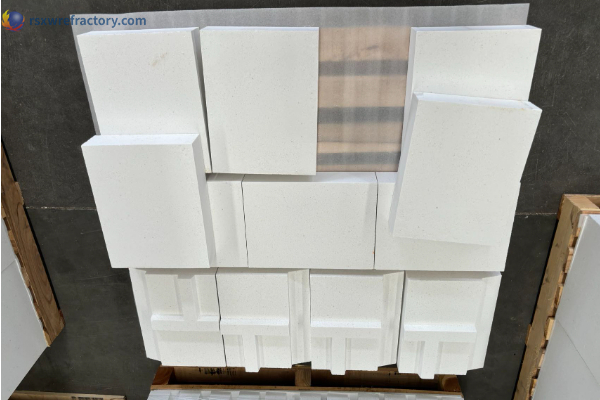Chrome corundum refractory brick is a refractory material that performs well in high-temperature and corrosive environments. It is often used in the lining and furnace of high-temperature industrial equipment. Chrome corundum brick is a high-performance refractory material with good high-temperature corrosion resistance. The following are some of chrome corundum bricks’ main properties and characteristics.

What are the characteristics of chrome corundum refractory brick?
- Bestand tegen hoge temperaturen: Chrome corundum refractory bricks can withstand high temperatures, usually reaching over 2000 graden Celsius. This makes it perform well in high-temperature industrial environments, such as metallurgy, glass, cement, and other industrial fields.
- Corrosiebestendigheid: Chrome corundum fire bricks have good resistance to chemical corrosion and acid and alkali corrosion. This allows it to maintain stable performance in the presence of some corrosive gases and chemicals.
- Thermal shock stability: Chrome corundum bricks have good thermal shock stability and can maintain structural integrity in an environment with rapid temperature changes.
- High strength and hardness: Chrome corundum bricks have high strength and hardness, enabling them to withstand high temperatures, high pressures, and mechanical shocks.
The difference between chrome corundum bricks and white corundum bricks

Corundum bricks are refractory bricks with an alumina content greater than 85%. Corundum bricks are divided into sintered and fused corundum bricks, while chrome corundum refractory bricks are high-grade refractory bricks made by adding Cr2O3 to corundum, forming at high temperature, and sintering at high temperature. Chrome corundum refractory bricks are also divided into fused chrome and sintered chrome corundum refractory bricks.
What are the differences between the two types of refractory bricks?


Differences in high-temperature resistance
The refractoriness of chrome corundum bricks is greater than 1790℃ and the refractoriness under load temperature is greater than 1700℃. The operating temperature of corundum refractory bricks is 1600℃. The high-temperature performance of chrome corundum refractory bricks is better than that of pure corundum bricks.
Different compressive strength
The compressive strength of corundum refractory bricks is 70-100MPa, and the room temperature compressive strength of chrome corundum bricks is greater than 150MPa, which is significantly higher than that of corundum bricks. During the firing process of corundum bricks and chrome corundum bricks, Al2O3-Cr2O3 solid solutions are formed between particles, between particles and fine powders, and between fine powders. The solid solution connects the particles and fine powders together, greatly improving the strength of the refractory bricks.
Different thermal shock stability

The thermal shock stability of chrome corundum refractory bricks decreases with the increase of Cr2O3 content, dat is, the thermal shock stability of chrome corundum bricks with low Cr2O3 content is better than that of bricks with high Cr2O3 content. Generally, the Cr2O3 content of chrome corundum bricks is between 12% En 20%; especially the AKZ-type chrome corundum bricks produced by adding a small amount of phase change additives, which have better thermal shock stability.
Different resistance to slag erosion

Corundum refractory bricks are severely corroded by slag, and the slag will penetrate into the bricks and penetrate into the surface along the internal pores of the bricks, turning the brick surface brown; chrome corundum bricks are almost not corroded by slag, the edge of the inner hole and the residue are clearly demarcated, and the slag rarely penetrates into the bricks. Chrome corundum refractory bricks are better than corundum refractory bricks in terms of chemical corrosion resistance and permeability to gasified slag.
The difference between the application of chrome corundum bricks and corundum bricks

Chrome corundum bricks are used for glass kiln linings, hot metal pretreatment devices, waste incinerators, gasifier linings, enz. Corundum bricks are used for linings of various high-temperature kilns such as cracking and conversion furnaces in the petrochemical and fertilizer industries, steelmaking furnaces in the metallurgical industry, and blast furnaces.
Both products have their own advantages, but chrome corundum bricks are more resistant to high temperatures and corrosion than corundum refractory bricks. Corundum refractory bricks are cheaper than chrome corundum refractory bricks. When the temperature is suitable, it is also a reasonable choice to choose corundum refractory bricks in the right place and at the right temperature to reduce production costs.
 Rongsheng -groep
Rongsheng -groep

Wechat
Scan de QR -code met WeChat